
Evolution of Thanksgiving
by Maleeya Mickelson
Modern day Thanksgiving has evolved significantly since the First Thanksgiving in 1621. From the history of the first feast to Thanksgiving football games and the restaurants families now celebrate in, Americans have put their own stamp on this beloved holiday.
The Story of Thanksgiving
What Americans have come to know as the “First Thanksgiving” is often an oversimplification of events that occurred in 1621 which led up to that feast. Colonists were able to enjoy their bountiful meal because of the Native Americans’ friendship, willingness to help, and experience with survival skills in what is now Massachusetts.
But these Native Americans were not the stereotypical “Indians” some may think of from portraits and cartoon images seen over the years. The Native Americans who took part in the first Thanksgiving were part of the Wampanoag tribe, which still exists today. The Wampanoag had inhabited the land and given thanks for their abundances long before the Europeans arrived. In fact, they did not wear feather headdresses like many images portray and should be acknowledged as an individual tribe with their own diverse cultures and traditions, rather than being lumped together with all tribes under the term “Indians”.

Stereotypical depiction of the “First Thanksgiving”
Before the first Thanksgiving, the Wampanoag negotiated a peace treaty with the colonists to come to each other’s aid. The Wampanoag needed the colonists with their weapons to help defend them against another enemy tribe. In return, the colonists required assistance in learning how to survive by planting native crops, learning to hunt and fish, as well as other ways to successfully live on their new land.
For centuries, the story of this day has only been told through a European’ perspective. Now, with the work of Native Peoples, historians, and educators, more people are learning further details about the story of the “First Thanksgiving”. This changes the way that Native Americans are perceived within history and today’s society by considering the Native Peoples’ rich traditions and cultural diversity.
Thanksgiving Thursdays
Although Americans now know Thanksgiving to be on the 4th Thursday of November, the United States had to come a long way to settle on that date.
Surprisingly, the date of the first Thanksgiving was actually some time in mid-October 1621. It wasn’t until 1668 that the date of November 25th was decided on; however, that date only lasted for 5 years. In 1789, George Washington proclaimed Thursday, November 26th as a day of “sincere and humble thanks”.
Later, when President Abraham Lincoln declared Thanksgiving a national holiday, the date was set to the last Thursday of November. The date stayed the same until 1941 when President Franklin Delano Roosevelt changed Thanksgiving to the 4th Thursday of November in order to give citizens more days for Christmas shopping to increase retail sales to help the economy right after the Great Depression.
While the majority of US holidays fall on a Monday or a specific calendar date, Thanksgiving falls on a Thursday. Although historians aren’t sure as to why Thanksgiving has been on a Thursday since George Washington first announced the holiday, they believe it had to do with religion. When deciding on the date for the holiday, Thursdays were further from the Sabbath day (Sunday) and since religious talks were usually held on Thursday afternoons, it may have worked better with scheduling.
Transforming Traditions
As the holiday of Thanksgiving has spread nationwide, many new traditions have begun to sprout. Some of these include traveling, parades, and Thanksgiving football games.
Many Americans travel for Thanksgiving, whether it’s to visit family or to go on vacation. In fact, every Thanksgiving, about 4 million Americans are estimated to travel 50 or more miles for Thanksgiving. Research also shows that the Wednesday before Thanksgiving has 37% of travelers departing, making it the single busiest day for travel in the year.
Parades like the Macy’s Thanksgiving Day Parade in New York City celebrate Thanksgiving every year. This annual parade started in 1924, originally to promote Christmas shopping at this large department store. The parade includes giant balloons of popular characters, various floats, marching bands and famous performers.

Macy’s Thanksgiving Day Parade
Ever since the first football game on Thanksgiving day occurred in 1876, Thanksgiving has been known for football. The game was the Intercollegiate Football Association championship with the football teams from Yale and Princeton playing. This Thanksgiving game and all the rest to follow were so successful that in 1893, the New York Herald declared Thanksgiving the official football holiday.
After the NFL was founded in 1920, games have been played on Thanksgiving almost every year. Teams like the Detroit Lions and the Dallas Cowboys played a big part in this as the Lions have hosted a game every year on Thanksgiving since 1934 (excluding WWII), while the Cowboys have hosted games most years since 1966.
Similar to football games today, the Pilgrims took part in vaulting, fencing and archery during their Thanksgiving festivities.
Time for the Feast
Although we now think of foods like pumpkin pie and turkey as a staple of Thanksgiving feasts, during the first Thanksgiving, neither of those were present. Foods eaten during the first Thanksgiving were native foods like geese, deer, and squash, which were later replaced with the classic foods many eat for Thanksgiving today like turkey, cranberry sauce, and pumpkin pie.

Typical modern Thanksgiving dinner
Much of the evolution of Thanksgiving foods has occurred because of the diverse cultures here in the U.S. Instead of eating the stereotypical Thanksgiving dinner, some people eat different meals belonging to their culture, such as tamales, lasagna, and vegan dishes.
Along with the different types of food served, the way food was prepared has also evolved. For example, it has long been common for people to oven roast turkey though deep frying it is now gaining in popularity.
Until the last few decades, people may not even have considered having someone else cook their special Thanksgiving dinner, but today it’s quite common. Instead of serving home-cooked meals, people today may go out to a restaurant with family and friends or get food catered – maybe even order Door Dash. It’s also been common to hold Thanksgiving potlucks recently. With potlucks, each individual cooks less food, decreasing holiday stress; plus, having a potluck is a way for people to eat a more diverse meal. They might taste food brought by others that they wouldn’t have had normally for Thanksgiving.
Although celebrated in different ways, the overall idea of Thanksgiving has always been to come together with others and show gratitude. Over time, different parts of the Thanksgiving celebration have changed as people from new cultures have shared their food and traditions, commercialization of the holiday has occurred, and society has gained a better understanding of respecting the culture and diversity of Native Americans.
Read More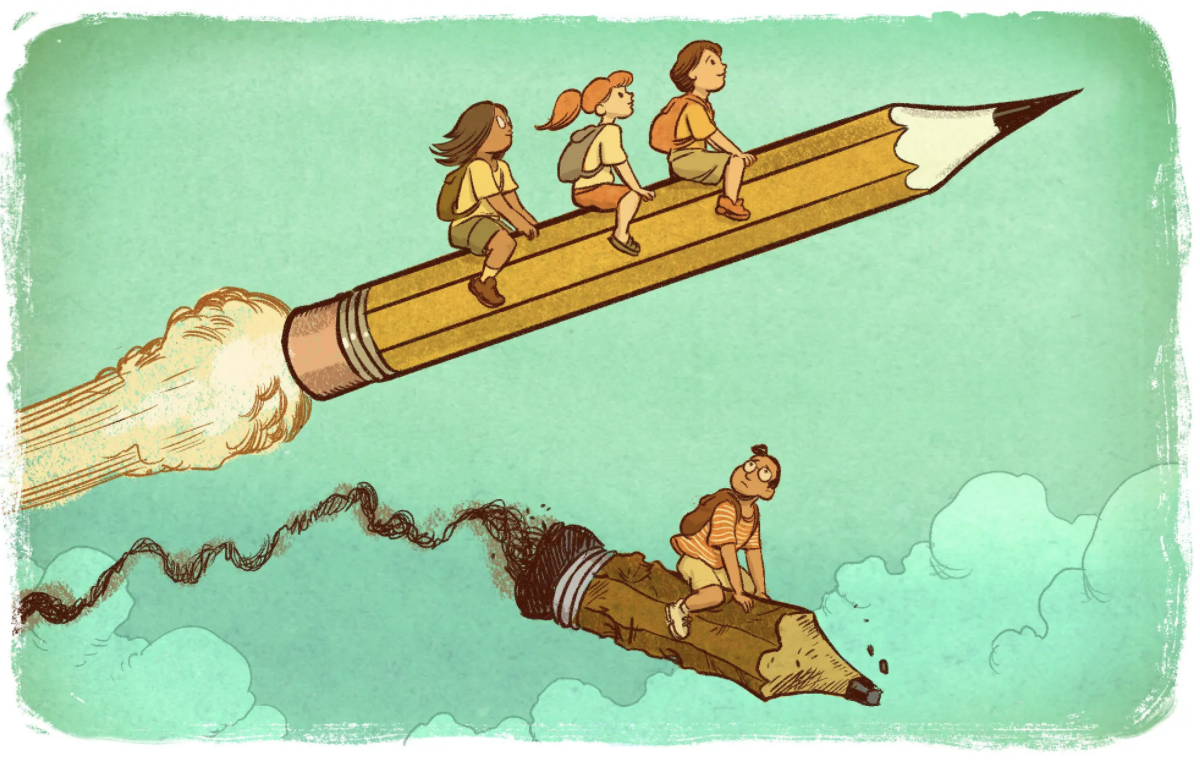
Educational Inequalities
by Jacob Yu
When I ran as an LAUSD student board member, I became more fully aware of the issues that deeply affect our district. When I attended the Student Superintendent Council Board meeting, many student representatives voiced their dissent and noted the racial and economic inequality within LAUSD. Listening to their complaints and concerns, I was inspired to research and continue exploring the issue of educational inequality in our school district. My continued interest and sparked passion from this event led me to produce this research article, which analyzes the history and roots of LAUSD educational inequality.
In the 1980s, Rodriguez vs. LAUSD was a court case started by Mexican American parents who noticed unequal educational treatment in their schools and towards their students. Mexican American community schools within LAUSD had subpar facilities, insufficient resources compared to White students, less money spent per student in comparison to wealthier White students, larger classroom sizes, and less qualified teachers. All of the aforementioned factors had a direct effect on the academic performance of students who attended these schools, with students attending primarily Hispanic schools scoring significantly lower in math and reading than students in primarily White schools. Although this case required LAUSD to uphold a consent decree where they would outline plans to alleviate the inequalities present within the district, the LAUSD legal department indicated they had no obligation to keep the school board updated on the Rodriguez case and subsequently released no reports regarding the progress on such an issue. The legal team in LAUSD only expanded after the consent decree, mainly to protect the district from liabilities rather than address the needs of the children attending these schools. To this day, LAUSD students within low-income neighborhoods do not have enough funds to maintain school facilities or hire better teachers. The money allocated and distributed by the government consistently goes to higher-performing schools rather than the neediest schools, failing to provide necessary quality education to low-performing schools. This scarcity in education disproportionately affects non-White students within LAUSD. In a paper published by the Speak Up Parents Organization within LAUSD, it was noted that one-third of African American students were less likely to achieve proficiency in ELA (English Language Arts) on the Smarter Balanced test, they were 3.4 times less likely to achieve proficiency in ELA and math in comparison to their peers, and the gap between African American and White students ranged from 28% to 40%. These figures clearly show a discrepancy between White students and African American & Hispanic students. In addition to being present in LAUSD, this issue is one that plagues American education across the nation.
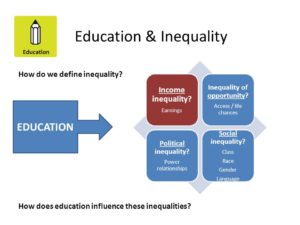
Inequality has been at the center of American economic and social issues. This can especially be seen in rising income inequality among races, an issue that affects individuals in very real ways. These effects are particularly present in the quality of high school and collegiate level education among the spectrum of income. There is significant inequality between racial groups, with White and Asians being classified as the highest income groups and African Americans, Native Americans, and Hispanics qualifying for the lowest income groups (Akee & Jones and Porter, 2019). Familial income has a significant role in school readiness and long-term success in school. Due to this, children attending schools with low-income classmates have worse academic performance and graduation rates compared to children attending schools with more affluent classmates (Duncan & Murnane, 2014). There are major discrepancies among racial groups in academic performance. A majority of racial minorities attend schools with low funding and have less access to educational resources in comparison to White students (Darling-Hammond, 1998). Further, the educational gap in relation to income has a direct effect on collegiate education, for there has been an association between collegiate inequality and income inequality, especially in recent decades (Micelle & Holzman, 2020).
LAUSD schools are funded by the state, mainly from income and sale taxes as well as local property taxes. Thus, a majority of the funding for LAUSD schools are based on the local environment that students live in. The national issue of educational inequality and discrepancies in academic performance amongst racial groups can be seen within LAUSD. For this article, I analyzed the most recent open source data demographics for each of the seven board districts within LAUSD and used statistical analysis to identify five major outcomes regarding race and income. Using data on the percentage of economically disadvantaged students and the rates of college completion within six years, I found a statistically significant negative correlation. This implies that as the percentage of economically disadvantaged students increases, the rates of college completion within six years decreases. Further, observing data on the percentage of non-White students and the rates of college completion within six years, I found a statistically negative correlation. This indicates that as the percentage of non-White students increase, the rates of college completion within six years decreases. In addition to this, using data on the percentage of non-White students and four year cohort dropout rates, I was able to find a statistically significant positive correlation. This suggests that as the percentage of non-White students increase, the four year cohort dropout rates subsequently increase. Moreover, when utilizing the percentage of non-White students and the percentages of students chronically absent, there was a statistically significant positive correlation. This notes that as the percentage of non-White students increase, the percentage of students grades 9-12 chronically absent increases as well. Finally, when testing both the percentages of students grades 9-12 chronically absent and the rates of college completion within six years, there was a statistically significant negative correlation. This means that as the percentage of students grades 9-12 chronically absent increases, the rate of college completion within six years decreases. These figures indicate that students who attend majority non-White schools are less likely to enroll or stay in college, drop out within four years of their high school experience, and be chronically absent from grades 9-12 than their majority White counterparts. Further, students who attend schools with high percentages of low-income families are less likely to enroll or stay in college than their higher-income counterparts, with chronic absenteeism from grades 9-12 being a factor in lower college enrollment and persistence. These outcomes clearly indicate that non-White students, particularly Hispanic and Black students, and lower-income students are at a disadvantage to their White, higher-income counterparts in regards to higher education. This was clearly evident in the difference in educational experience between students that attended schools on opposite ends of the racial and income spectrum.
One student, identified as Ash, attending a school in Board District 6 – a district with the second highest Hispanic population, highest percentage of economically disadvantaged students, lowest college enrollment and completion rates – noted how his school’s resources and funds were used in unproductive ways, explaining, “I feel like our funds could have gone towards many other things such as sports, more teachers, more academies.” When asked about his peer’s living situations in regards to their educational experience, he also noted how, “Some people have terrible living conditions or sometimes they have siblings they have to deal with. For example, I have a little brother and sometimes I gotta help him. And with athletics and everything, I gotta be home at, like, 6:00 or 7:00. And trying to get my homework done and my siblings – it’s kinda difficult sometimes.” He also commented on the lack of counselors, college visits, and tutoring within his school. This has had an impact on his higher education aspirations. When asked about if his school was preparing him well for college he said, “No, not really, just a lot of general stuff, nothing specific that helps you towards your degree. I mean, as I said earlier it’s a lot of information to be processing in a day.” Ash also observed how many of his peers applied and attended community college due to the high cost of universities or four-year colleges, saying, “Yeah, it actually does, like whether like if it was someone that was making more money they probably were able to go to a prestigious college rather than someone that’s a low income family, they probably go to a community college… It sometimes worries me thinking how much the cost of education will be, if I can afford it.”
The difference between Ash’s experience and that of another student who lives in Board District 6, a district with the highest college enrollment and completion and White enrollment, and the lowest percentage of economically disadvantaged students, is clear. The student, Tara McKillop, noted how a majority of her teachers were well-qualified, stating, “Of the teachers that are my favorite, they have engaged the students in learning and stuff like that, but they’ve also shown that they prioritize the student’s education and also emotional status too. I would also say that with those teachers that they are overqualified in the sense that they could be doing so much more than just teaching and we, the students, show that we are really grateful for that. We do have a good amount of APs offered at our schools and the teachers for those are really nice.” She also noted how a lot of the AP classes were filled with White and Asian students, rather than Black or Hispanic. When asked about the support that she receives for her high school education, McKillop stated, “Something that my school offers is lunch tutoring, by students for students. Some of my teachers also do provide tutoring and stuff like that so I think overall my school understands the kids’ situations.” She also stated how, “My parents do support me in my educational experience and I would say also my teachers have been a big influence on it. They’re there for the students to help them out with anything that they need.” When questioned about college preparation, McKillop noted how her college center has easily accessible resources and helpful college counselors. She also commented on the college educational aspirations and experiences of her peers, stating, “So the graduating class that I was close to, a lot of them got into Santa Barbara and San Diego. So, a lot of them are getting into UCs top colleges. I know quite a few of them were able to also go out of state.” This difference between Tara’s and Ash’s schooling and experiences towards higher education directly reflects the disparity that students within LAUSD experience.
This inequality in education continues to go unheard as thousands of students from similar backgrounds as Ash face similar obstacles and difficulties that other students simply do not experience. We must do a better job of being there for our kids.
Read More
Filipino-American Heritage Month
By Jordin Lim
Filipino Heritage Month, spanning from October 1 to October 31, celebrates the heritage and achievements of Filipino Americans. As the second-largest Asian American population in the United States, Filipino Americans have played a significant role in the history, culture, and progression of the United States.
History of Filipino-Americans
October represents Filipino Heritage Month since it marks the important moment when Filipinos first arrived in the continental United States. From 1565 to 1585, Spain ruled the Philippines as a colony. During this time, seafarers would recruit Filipinos on voyages across the Pacific during the Manila galleon trade era. On October 18, 1587, the first-recorded Filipinos arrived aboard a Spanish ship in what is now Morro Bay, California, marking the start of Filipinos’ history in America.
Filipino Contributions to the United States
Filipinos have been a part of American history for many centuries, during which they have made significant contributions to our nation.
- In the early 1920’s, many Filipinos, called manongs, left the Philippines to work in the plantations of Hawaii and California and the fisheries of Washington and Alaska, contributing greatly to the farmworker movement of the U.S.
- During WWII, Filipinos, both in the United States and in the Philippines, fought with and for the United States.
- In the late 60’s and 70’s, many Filipino professionals left their native country to help fill the workforce of the healthcare industry.
- Filipino-Americans have made valuable contributions in the health field, service industry, hospitality, technology, education, government, armed forces and construction, among many other fields.
Filipino Traditions
- Filipino courting
- Harana, Filipino courting, was the traditional form of courtship in the Philippines, in which men wooed a woman of interest by singing underneath her window at night. Suitors would sing their sweetheart romantic songs, usually with a guitar, since its intimate sound complemented the sweet Spanish-influenced songs along with the poetry and lyricism of the Tagalog language.

- Boodle fight
- In Filipino culture, a boodle fight is a traditional way of eating Filipino food with one’s family. A boodle fight is also called a Filipino Kamayan Feast, kamayan translating to “by hand,” describing the method of eating with your hands, which is what you do during a boodle fight, as you a share a meal with family and friends over a banana-leaf filled table filled to the max with many delicious Filipino dishes, such as garlic rice, fried tilapia, mangoes, and salted eggs.

- 4 month Christmas and Parol
- In the Philippines, Christmas isn’t celebrated only in December. As soon as the –ber months begin, Christmas is in season, from September to December. In Filipino houses across the country, parols are usually hung up on the doors of their houses. The parol is a traditional, star-shaped Christmas lantern that represents the star that the three wise men followed.

Notable Filipino-Americans
- Olivia Rodrigo
- Olivia Rodrigo, well-known American singer-songwriter and actress, is Filipino-American through her father’s side of the family. Rodrigo has admired her great-grandfather’s immigration to the United States from the Philippines as a teen.
- Bruno Mars
- Bruno Mars, popular American singer, songwriter, and record producer, was born to a Filipino mother and half Puerto Rican, half Ashkenazi Jewish father.
- Jo Koy
- Jo Koy is a Filipino-American comedian, who recently starred in his film Easter Sunday, which shows his life returning home to celebrate Easter with his Filipino family.
Fun Facts about the Philippines
- When in war, the Philippines flips their flag.
- The Philippines is home to Asia’s first basketball league.
- The Philippines is the largest exporter of nurses globally.
- There are 175+ languages in the Philippines, and at least 171 of them are still considered ‘living’ languages.
- The Philippines is home to three of the world’s largest shopping malls: SM Megamall, SM North Edsa, and SM Mall of Asia.
- The Philippines is an island with more volcanoes than towns.
All in all, Filipino-American History Month is truly important. It celebrates the Filipino/Filipino-American community that has contributed so much to this nation, celebrates the diversity of America, and commemorates the achievements of Filipino-Americans. Today, many people in our community celebrate this month to raise awareness of the role Filipino-Americans have had in U.S. history.
Read More
Formula 1
by Adrianna Montes
What is Formula 1?
In just the past few years, Formula 1 racing has quickly built its audience in the United States to match its popularity around the world, especially thanks to increased exposure on television. In our country, most racing fans have gravitated towards NASCAR, but now Formula 1 is really giving NASCAR a run for its money!

Formula 1 is the fastest motorsport racing in the world. In fact, Formula 1 cars are faster than NASCAR cars, reaching speeds of 250 mph compared to 200 mph. In addition, NASCAR uses stock cars, which allows the drivers to bump into each other, whereas Formula 1 uses open-wheeled cars, which increases their speed but also makes them more vulnerable to crashes. NASCAR uses oval-shaped race tracks while Formula 1 has more complex racetrack circuits that require strong handling skills. Here are examples of both types of tracks to compare.


Formula 1 races can last up to two hours, while NASCAR races last 2-6 hours.
Teams, Drivers, and Grand Prix
This sport has ten teams with two drivers on each team, for 20 racers in total. These drivers participate in Grand Prix races around the world, usually about 22 times a year. These Grand Prix take place in different countries and cities around the world on complex circuits/race tracks with turns and straights. Usually, there is a traditional set of countries and cities that hold the Grand Prix, but some can also be replaced and added. For example, in 2023, a new circuit at Caeser’s Palace in Las Vegas will be included in the F1 Track Guide.
Championships
In this sport, there are two championships: the Constructors Championship and the Drivers Championship. The Constructors Championship is amongst the teams and is based on the combined points of all the drivers on the team. The Drivers Championship is amongst all the drivers. This is the amount of points that each individual driver gains throughout the season. In a race, only ten drivers will gain points. The winner receives 25 points, the second-place finisher 18 points, with 15, 12, 10, 8, 6, 4, 2 and 1 points for positions three through ten. Here are the current standings:
Constructor’s Championship

Driver’s Championship


With all the races that are left, no matter how many points anyone obtains, Max Vestappen, winner of the 2021 Drivers Championship, has enough points to win the 2022 Drivers Championship.
For a complete list of the F1 standings, go to https://www.formula1.com/en/results.html/2022/drivers.html.
What is the schedule?
The season generally starts in spring and ends in winter of the same year. Usually, there are races each week, but there are some weeks where no races take place. This schedule, also known as the Formula 1 calendar, is announced a few months before that year’s season. First, there are practices, which take place on Fridays. Then there are qualifying races on Saturdays; qualifying races determine what place the driver will take on the grid on Sunday. To determine this, racers will drive several laps and achieve their fastest time. Out of all the racers’ times, the fastest will be first, the second fastest will be second, and so on. Those who started on the grid in a place below 10 will start with zero points. Sunday is the actual race, where points are gained, lost, or kept the same. The 2022 season is drawing to a close, so be sure to check out the final exciting races!
Read More
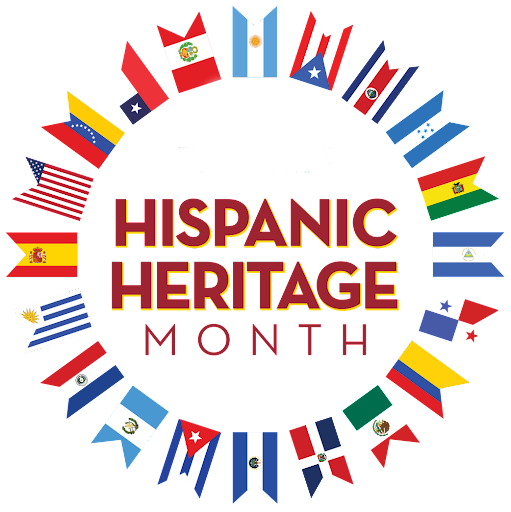
Hispanic Heritage Month
By Adrianna Montes and Milan Riley
The annual National Hispanic Heritage Month in the United States began this year on Thursday, September 15, and ended on Saturday, October 15. It celebrates the history, culture, and contributions of American citizens descended from Spain, Mexico, the Caribbean, and Central and South America.
This observance originated in 1968 as Hispanic Heritage Week under President Lyndon Johnson. It was later expanded into the month we know now in 1988 under President Ronald Reagan. The event was officially enacted into law on August 17, 1988, on the approval of Public Law 100-402. The date of September 15 holds special significance as it is the anniversary of independence for Latin American countries such as Costa Rica, El Salvador, Guatemala, Honduras, and Nicaragua. About 60 million, or about 18%, of the population of the United States is Hispanic or Latino.
In commemoration and appreciation of those of Hispanic heritage, here are some inspiring stars of Latino and Latina descent:
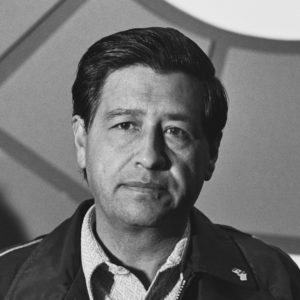
Cesar Chavez (1927-1993): Cesar Chavez was a Mexican-American labor leader and civil rights activist. He was dedicated to improving the working and living conditions of farm workers through organizing and negotiating contracts with their employers. He is responsible for enacting the first Bill of Rights for agricultural workers.

Shakira: Shakira, also referred to as “The Queen of Latin Music,” is a Colombian singer. She is 45 years old and credited with spreading Latin music to the world and contributing to the gaining popularity of the genre. She also supports UNICEF and helps raise awareness for the world’s most vulnerable children. Some of her famous songs include:
- “Hips Don’t Lie”
- “Waka Waka”
- “Whenever, Wherever”
Fernando Alonso: Fernando Alonso is a 41 year old Spanish Formula 1 driver who retired in 2013 and returned to the sport in 2021. He has won the Driver’s Championship twice and ninth in the Driver’s Championship while on team Alpine.


Sergio Perez: Sergio Perez, also known as Checo Perez, is the first Mexican Formula 1 driver in 30 years. Checo is short for Sergio in the Spanish dialect spoken in Mexico. He drives for Red Bull Racing, the current Constructors Champion. Perez is in third place in the Driver’s Championship.

Lionel Messi: Lionel Messi is an Argentinian soccer player and captain of his team in Ligue 1. He plays for Paris Saint-Germain and is considered one of the best soccer players. He is also involved in charitable efforts aimed at helping vulnerable children through UNICEF.
Cristiano Ronaldo: Cristiano Ronaldo is a Portuguese soccer player who plays forward in Manchester United and is captain of Portugal’s soccer team. He encourages determination and perseverance, which is connected to his childhood since he didn’t grow up with many resources or privileges. Ronaldo models and is an advocate of various causes from AIDS / HIV to slavery and human trafficking.


Lin-Manuel Miranda: Lin-Manuel Miranda is an actor, composer, lyricist and writer with Puerto Rican heritage. He is most known for the Broadway plays, Hamilton and In the Heights. His productions blended modern musical forms with classic musical theater. Miranda includes much diversity in his plays and so he provided an opportunity for people of color to retell the life story of a Founding Father.
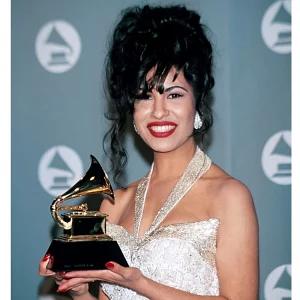
Selena Quintinilla: Selena Quintanilla, also known as the “Queen of Tejano Music,” was a Mexican-American singer and songwriter born in 1981. Sadly, she was killed in 1995. There are movies, shows, and books based on her life and some on how she grew up. Here are some of her most popular songs:
- “Como la Flor”
- “Bidi Bidi Bom Bom”
- “I Could Fall in Love”
- “Dreaming of You”
Rigoberta Menchu: Rigoberta Menchu is a Guatemala Nobel Prize winner. She won the Nobel Prize in 1992 for advocating Indian rights and ethno-cultural reconciliation, not only in Guatemala but in the Western Hemisphere generally. She has also won several international awards and is the youngest Hispanic to ever win a Nobel Peace Prize at the age of 33.

Read More
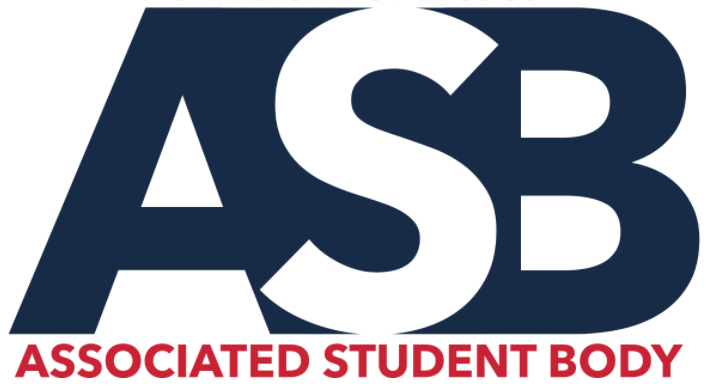
ASB Officer Statements
by Ryan Park
Congratulations To Our New ASB Officers!
Congratulations to ASB’s 2022-2023 Officers! We look forward to all the events the Associated Student Body of the Science Academy has in store for our school community!
High School ASB
President: Zahra R.
Vice-President: Jasper M.
Secretary: Esther C.
Treasurer: Seoyoon L.
Historian: Jenna L.
Middle School ASB
President: Erin Y.
Vice-President: Drew T.
Secretary: Ryan P.
Treasurer: Stella K.
Historian: Ethan K.
Class Representatives
12th Grade: Lauren P., Irene J., Paul Gabriel C.
11th Grade: Jared Y., Skylar R., Natalie E.
10th Grade: Lelu M., Raymond C., Suren G.
9th Grade: Saket P., Emily G., Nikhil A.
8th Grade: Kiahn L., Timothy L., Dani T.
7th Grade: Noah H., Kayla L., Jordan R.
6th Grade: Graham T., Maleeya M., Emma S., Ilkay K.
Commissioners
Club: Zachary M., Muaz R.
Appreciation: Katie S., Haon K.
Art/Publicity: Ava S., Charis K.
Activity: Daniel S., Sena H.
Dance: Ryan V., Medha P.
Service: Owen R., Ryan S.
Athletics: Jacob Y., Zachary R.
Statement from Zahra R., ASB High School President:
As the ASB Student Body President of the Science Academy STEM Magnet, I am excited by the initiatives we are implementing to build a strong, active, and thriving student community. Our students at the Science Academy are committed to giving back to our local communities and therefore we are enacting several programs such as Hope for the Homeless and a Veteran’s Drive, among others. For our Science Academy students, ASB has a calendar full of fun and enrichment-oriented activities for the entire school year. Some of these activities include: supporting our 40+ clubs in their membership drives, fundraising efforts, and communications, as well as executing fun activities such as Homecoming, Movie Nights, Pi Day Festival, and more. I am dedicated to making our student body our primary focus and highlighting their accomplishments and incredibly creative abilities. Additionally, it is important to note that our students are still dealing with the ramifications of the pandemic and facing the changing academic environment of today. I am proud to say that this year I am launching the INSPIRE Peer-to-Peer mentoring program where students will form networking circles with other students in the school to help bolster a spirit of community, in addition to providing insight into academic and social life at our school. As I enter my 5th year of ASB, I hope to continue to bring student voices to the forefront so we can make changes for the better at our school and create a positive effect on the world as we continue to give back to our community. I’m looking forward to an amazing and memorable school year!
Statement from Erin Y., ASB Middle School President:
Hello, Science Academy! My name is Erin and I am this year’s middle school president. As my second year in ASB, I am looking forward to building upon what we accomplished last year and make this year even better. My main goal as president is to be open-minded toward ideas and suggestions, as it is essential to listen to our student body. With the help of our commissioners, grade representatives, and officers, we have hosted many successful events such as Club Rush, Movie Night, and Spirit Week in less than 10 weeks! I am appreciative of the chance to be in ASB again and will exert all effort to not only carry out this duty but also to help make this school year unforgettable!
Statement from Jasper M., ASB Highschool School Vice President:
As Vice President, I want to be the voice of the students. I will make sure your thoughts and opinions are heard throughout the entire ASB. After a shaky last year, I want to reunite everyone again so we can feel stronger as a community. I promise to make sure clubs can have their own fundraisers and events with the support of ASB. Finally, I want to do my best to make decisions and events that would benefit the entire Science Academy community. I look forward to the excitement to come!
Statement from Drew T., ASB Middle School Vice President:
Hello, everyone! My goal is to help and support any student or staff at our school. To do this, I will help anyone with completing their goal – just let me know how I can help. I would also like to make this school a more entertaining, enjoyable place by creating fun events or just a simple joke of the day. If anyone has ideas or concerns, do not hesitate to reach out to me or message me on the S.A. Student Body Outreach Schoology Group. I look forward to helping everyone have a great school year!!
Read More
